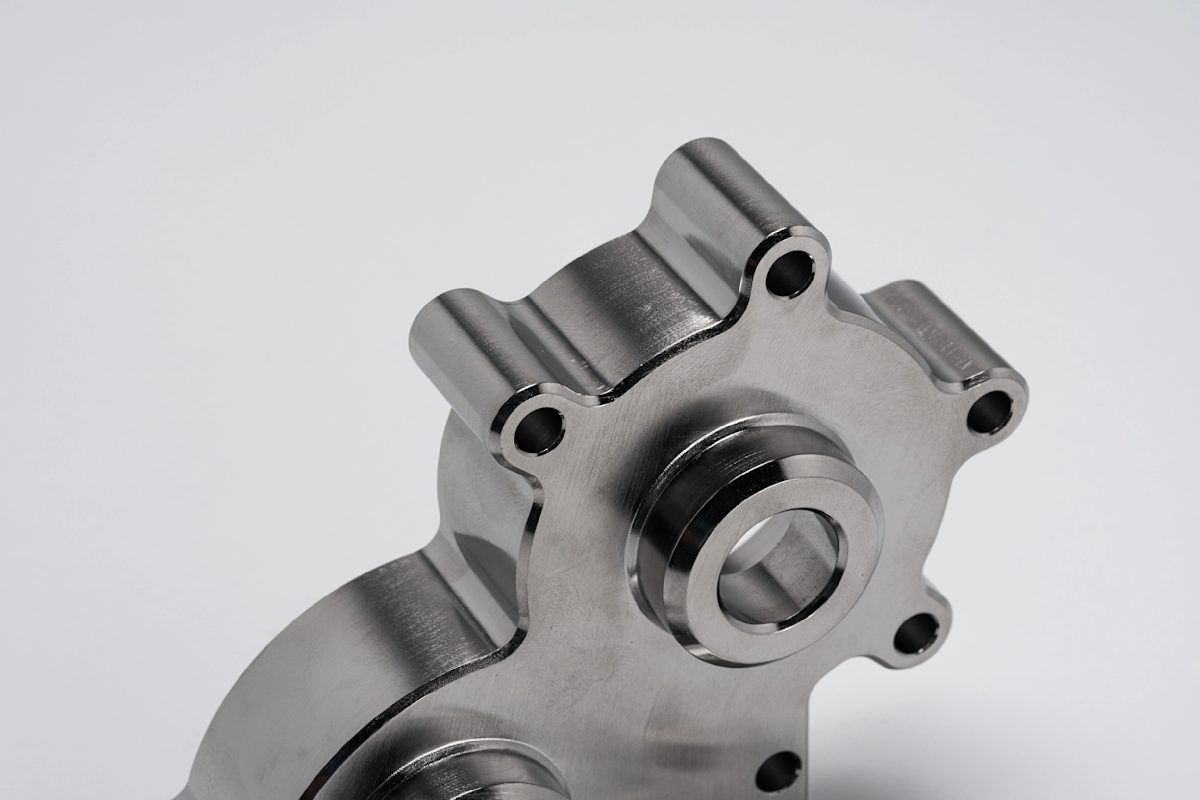Brushed + Electropolished (Ra0.8µm, 32µin)
Electropolishing gives parts a shinier appearance and makes them easier to clean and more resistant to corrosion. It also deburrs the surface roughness of stainless steel on a microscopic level (up to 10µm).
| Requirement | Specification |
|---|---|
| Surface preparation | Brushed |
| Color | Natural metal color |
| Part masking | Indicate masking requirements in technical drawing |
| Cosmetic availability | Cosmetic by default |

Example of a brushed + electropolished part


The Protolabs Network brushing + electropolishing process
Here’s how to apply brushing and electropolishing:
-
The part’s surface is cleaned and prepared by power brushing
-
The metal part being electropolished (aka anode) is connected to the positive terminal of a direct current (DC) rectifier and submerged in a tank of an electrolyte solution. The negative terminal of the rectifier is connected to a cathode (usually stainless steel) that is also submerged in the tank
-
A current runs through the solution from the anode to the cathode, causing ions on the surface of the material to oxidize and dissolve into the solution
-
Parts are then rinsed from the electrolyte solution in a different tank
-
To finalize the finish, parts go through a final post-dip in a Nitric dip or a Citric acid, rinsed with cold water and are put to dry

Put your brushed + electropolished parts into production today
Get instant quote




